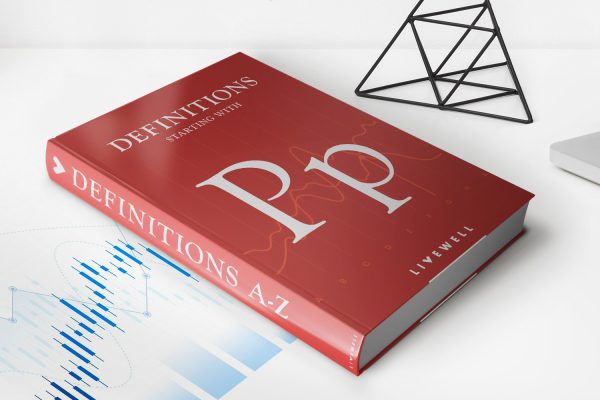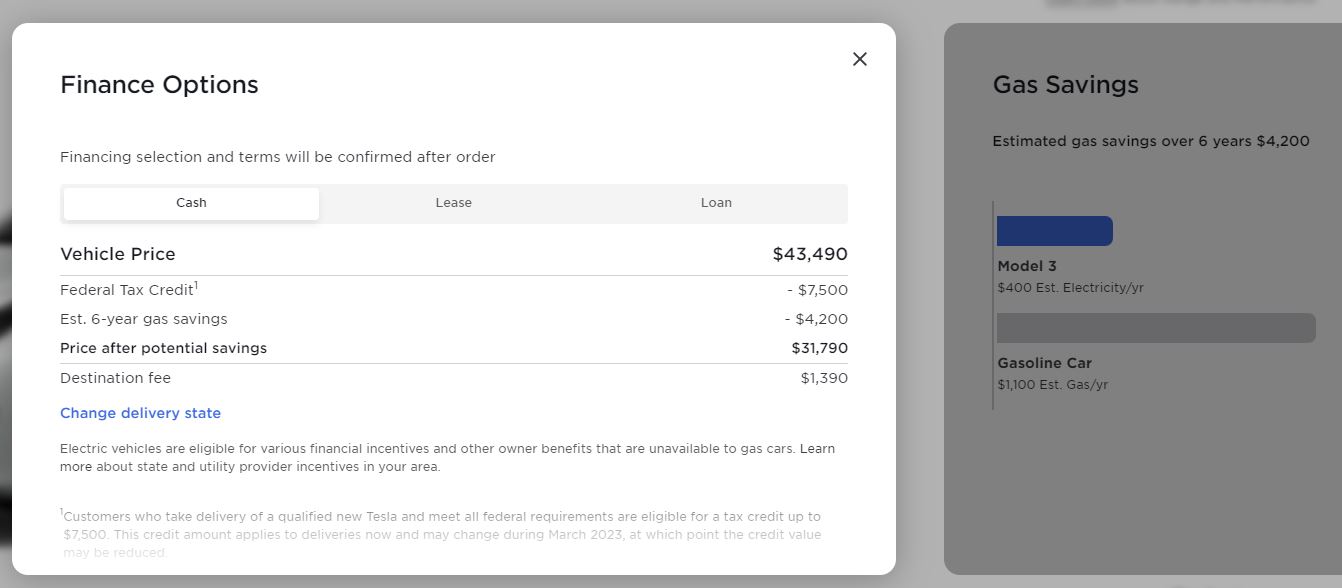

Finance
Where Can I Get A 40,000 Personal Loan
Modified: February 21, 2024
Looking for a personal loan of $40,000? Discover the best finance options available to you and get the funds you need.
(Many of the links in this article redirect to a specific reviewed product. Your purchase of these products through affiliate links helps to generate commission for LiveWell, at no extra cost. Learn more)
Table of Contents
- Introduction
- Understanding Personal Loans
- Factors to Consider Before Applying for a $40,000 Personal Loan
- Where to Find Personal Loans
- Online Lenders
- Banks and Credit Unions
- Peer-to-Peer Lending Platforms
- Private Lenders
- Requirements and Eligibility Criteria for a $40,000 Personal Loan
- How to Apply for a $40,000 Personal Loan
- Comparing Loan Options and Interest Rates
- Tips for Getting Approved for a $40,000 Personal Loan
- Conclusion
Introduction
Are you in need of a $40,000 personal loan? Whether you want to consolidate high-interest debt, fund a home renovation, or cover unexpected medical expenses, a personal loan can provide you with the financial assistance you need. However, finding the right lender and navigating the loan application process can be daunting.
In this article, we will explore the various options available to you when seeking a $40,000 personal loan. We will discuss the factors to consider before applying, the different sources where you can find personal loans, the requirements and eligibility criteria, as well as tips on getting approved.
Understanding the ins and outs of personal loans is crucial in making informed decisions. By exploring different lenders and their offerings, you can secure the best terms and conditions, as well as competitive interest rates.
So, if you’re wondering where you can get a $40,000 personal loan, read on to discover key information that can help you make the right financial choice.
Understanding Personal Loans
Before diving into the process of finding a $40,000 personal loan, it’s important to have a clear understanding of what personal loans are and how they work. A personal loan is a type of installment loan that allows you to borrow a specific amount of money, typically ranging from $1,000 to $100,000. Unlike loans that are secured by collateral, such as a car or a house, personal loans are unsecured. This means that you don’t have to put up any assets as collateral to obtain the loan.
Personal loans come with a fixed interest rate and a specified repayment term, usually ranging from one to seven years. This allows you to budget and plan your monthly payments in advance, making it easier to manage your finances. The interest rate on personal loans can vary depending on factors such as your credit score, income, and the lender you choose.
One of the advantages of personal loans is their flexibility. You can use the funds for a wide range of purposes, including debt consolidation, home improvements, medical expenses, and even vacations. Unlike some other types of loans that have restrictions on how you can use the money, personal loans give you the freedom to use the funds as per your needs.
When borrowing a $40,000 personal loan, it’s important to consider your financial situation and ensure that you can comfortably afford the monthly payments. Before applying for a loan, evaluate your income and expenses to determine how much you can realistically afford to borrow and repay.
Understanding the terms and conditions of personal loans and assessing your financial capacity is crucial in making informed decisions and avoiding potential financial strains down the line. As you navigate the loan application process, keep this knowledge in mind to make the best financial choice for your situation.
Factors to Consider Before Applying for a $40,000 Personal Loan
Applying for a $40,000 personal loan is a significant financial decision that requires careful consideration. Before you move forward with your loan application, take the time to evaluate the following factors:
- Interest Rate: The interest rate plays a crucial role in determining the overall cost of your loan. Compare interest rates from different lenders to ensure you secure the most competitive rate possible. Keep in mind that your credit score and financial history will impact the interest rate you qualify for.
- Repayment Term: Consider the length of the loan term and how it will affect your monthly payments. Shorter terms may require higher monthly payments but result in less overall interest paid, while longer terms offer more affordable monthly payments but may result in higher interest costs over time.
- Additional Fees: In addition to the interest rate, be aware of any additional fees associated with the loan, such as origination fees, prepayment penalties, or late payment fees. These fees can add to the overall cost of the loan, so factor them into your decision-making process.
- Financial Stability: Assess your financial stability and ability to repay the loan. Consider your income, expenses, and any existing debts. Ensure that borrowing a $40,000 personal loan will not put you under excessive financial strain and that you can comfortably manage the monthly payments.
- Credit History: Your credit history will significantly impact your loan eligibility. Lenders will review your credit score and credit report to assess your creditworthiness. Make sure your credit history is accurate and take steps to improve your credit score if necessary before applying for a loan.
- Lender Reputation: Research and evaluate the reputation of the lenders you are considering. Read reviews, check their customer service ratings, and ensure they are reputable and trustworthy before proceeding with your loan application.
By considering these factors, you can make an informed decision when applying for a $40,000 personal loan. Remember to compare options, choose a reputable lender, and ensure that the loan terms align with your financial goals and capabilities. Taking the time to evaluate these factors will help you secure a loan that best suits your needs while minimizing financial risks.
Where to Find Personal Loans
When searching for a $40,000 personal loan, there are various sources you can explore. Here are some common avenues to consider:
- Online Lenders: Online lenders have become increasingly popular due to their convenience and accessibility. Platforms like LendingClub, SoFi, and Prosper allow you to apply for a loan from the comfort of your own home. They typically offer a streamlined application process and provide competitive interest rates.
- Banks and Credit Unions: Traditional brick-and-mortar banks and credit unions also offer personal loans. These institutions often prioritize existing customers and may require a personal visit to the branch for the application process. They may offer the advantage of personalized service and the ability to discuss your loan options with a loan officer.
- Peer-to-Peer Lending Platforms: Peer-to-peer lending platforms connect borrowers directly with individual investors. Examples include platforms like Prosper, LendingClub, and Upstart. With peer-to-peer lending, you have the opportunity to secure a loan funded by individual investors who are willing to lend money at competitive rates.
- Private Lenders: Private lenders, such as family and friends, may also be an option to consider. These informal lending arrangements may offer greater flexibility in terms and repayment. However, it is essential to approach such arrangements with care and ensure clear terms are established to avoid potential conflicts or misunderstandings.
It’s crucial to research and compare the different lenders and their loan offerings. Consider factors such as interest rates, repayment terms, fees, and eligibility requirements before making a decision. Utilizing online lending marketplaces can be particularly helpful in comparing multiple lenders and their loan products.
Remember to take the time to read customer reviews, check the lender’s reputation, and understand the terms and conditions before proceeding with a loan application. By exploring these various sources, you can increase your chances of finding the best loan option that aligns with your financial needs and goals.
Online Lenders
Online lenders have revolutionized the lending industry by offering a convenient and accessible way to obtain personal loans. When searching for a $40,000 personal loan, online lenders can be an excellent option to consider. Here’s what you need to know:
Convenience and Efficiency: Online lenders provide a streamlined application process that can be completed entirely online. This eliminates the need for in-person visits to a bank or credit union, saving you time and effort. The online application typically involves filling out a form with personal and financial information and submitting any necessary documentation electronically.
Wide Range of Options: Online lenders offer a variety of loan options, allowing you to find competitive interest rates, flexible repayment terms, and loan amounts that suit your needs. By using online lending marketplaces, you can easily compare multiple lenders and their loan products to ensure you secure the best possible terms.
Competitive Interest Rates: Many online lenders offer competitive interest rates, especially for borrowers with good credit. By shopping around and comparing different lenders, you can find favorable rates that help minimize the overall cost of your loan.
Accessible for All Credit Types: Online lenders often cater to a range of credit profiles, including borrowers with less-than-perfect credit. While interest rates may be higher for those with lower credit scores, online lenders offer more flexible eligibility requirements compared to traditional banks.
Customer Reviews and Ratings: Before choosing an online lender, be sure to research their reputation. Read customer reviews and check their ratings with the Better Business Bureau or other reputable review platforms. This will give you insight into the experience of other borrowers and help you choose a trustworthy lender.
Security and Data Protection: Online lenders prioritize the security of your personal and financial information. Look for lenders with robust encryption systems and privacy policies to ensure your data remains safe during the application process.
When considering online lenders, take the time to explore reputable platforms such as LendingClub, SoFi, and Prosper. By utilizing their services, you can enjoy the convenience of online applications, access competitive loan options, and have a higher likelihood of finding a $40,000 personal loan that aligns with your financial needs and goals.
Banks and Credit Unions
Banks and credit unions are traditional financial institutions that offer personal loans. If you prefer a more personal and face-to-face lending experience when seeking a $40,000 personal loan, banks and credit unions may be the right choice for you. Here’s what you need to know:
Established and Trustworthy: Banks and credit unions have a long-standing history in the financial industry, providing a sense of security and trust. Many individuals prefer the familiarity and stability associated with these institutions.
Personalized Service: One advantage of working with banks and credit unions is the ability to discuss your loan options with a loan officer. They can offer guidance and help you navigate the loan application process. This personalized service can be beneficial, especially if you have specific questions or concerns.
Existing Customer Advantage: Banks and credit unions often prioritize existing customers when it comes to loan approvals. If you have an established relationship with a bank or credit union, you may have a better chance of securing favorable loan terms.
Physical Branches: Unlike online lenders, banks and credit unions have physical branches where you can visit and speak with a representative in person. This can be advantageous if you prefer face-to-face interaction or have specific requirements that may be better addressed by visiting a branch.
Competitive Rates: Banks and credit unions may offer competitive interest rates for personal loans. However, it’s important to compare rates from multiple institutions to ensure you’re getting the best deal. Keep in mind that your creditworthiness will play a significant role in the interest rate you qualify for.
Membership Requirements: Credit unions require membership for eligibility. This usually involves meeting certain criteria, such as residing in a specific geographic location or being affiliated with a particular organization. Be sure to check the requirements before applying for a loan from a credit union.
Application Process: When applying for a personal loan at a bank or credit union, you will typically need to visit a branch and provide the necessary documentation. This may include proof of income, identification, and other financial information. The loan officer will guide you through the application process and inform you of the required documentation.
When considering banks and credit unions, research different institutions, compare interest rates, and evaluate their loan terms. Popular banks and credit unions include Wells Fargo, Chase, Bank of America, and local community credit unions. By exploring these options, you can access personalized service, competitive rates, and potentially secure a $40,000 personal loan that meets your financial needs.
Peer-to-Peer Lending Platforms
Peer-to-peer (P2P) lending platforms offer an alternative way to access personal loans. These platforms connect borrowers directly with individual investors who are willing to lend money. If you’re looking for a $40,000 personal loan and want to explore different options outside of traditional financial institutions, peer-to-peer lending platforms may be worth considering. Here’s what you need to know:
Direct Connection: Peer-to-peer lending eliminates the intermediary role of traditional banks or credit unions. Instead, borrowers can directly connect with individual investors who fund their loans. This streamlined process can result in lower borrowing costs and potentially more favorable loan terms.
Competitive Interest Rates: Peer-to-peer lending platforms often offer competitive interest rates, especially for borrowers with good credit. The rates are typically determined through an auction-style process, where investors bid to fund a portion of the loan. This can result in lower interest rates compared to traditional lenders.
Flexible Eligibility Requirements: Peer-to-peer lenders may have more flexible eligibility criteria compared to banks or credit unions. While a good credit score is still essential, these platforms often consider other factors, such as your income and debt-to-income ratio, when assessing your loan application.
Online Application Process: Applying for a loan through a peer-to-peer lending platform is typically done online. You’ll need to fill out an application, provide personal and financial information, and upload any required documentation. The platform will then evaluate your application and assign an interest rate based on your creditworthiness.
Borrower Profiles: Peer-to-peer lending platforms often allow borrowers to create profiles that showcase their loan purpose, financial goals, and other relevant information. Having a well-crafted profile may attract more investors and increase the likelihood of securing a loan.
Diverse Range of Loan Purposes: Peer-to-peer lending platforms allow borrowers to seek loans for various purposes, whether it’s debt consolidation, home improvements, or other personal expenses. This flexibility gives you the freedom to use the loan proceeds as needed.
Platform Reputation and Borrower Feedback: Before choosing a peer-to-peer lending platform, research the reputation of different platforms and read borrower feedback. Look for platforms with positive reviews and transparent processes to ensure a trustworthy and reliable borrowing experience.
Some popular peer-to-peer lending platforms include Prosper, LendingClub, and Upstart. Take the time to compare different platforms, their fees, interest rates, and loan terms to find the best match for your $40,000 personal loan needs. Peer-to-peer lending can provide an alternative avenue to secure financing while potentially offering competitive rates and flexible terms.
Private Lenders
Private lenders, such as family, friends, or individual investors, can be a potential source of funding when seeking a $40,000 personal loan. Private lending arrangements offer flexibility and may provide viable alternatives to traditional lending institutions. Here’s what you need to know:
Informal Arrangements: Private lending deals are typically informal arrangements between individuals. This can result in more flexibility in terms of repayment schedules and negotiation of interest rates.
Personal Relationships: Borrowing from a private lender often involves leveraging personal relationships. Family and friends may be willing to lend you the funds based on trust and a mutual understanding. In some cases, individual investors may also act as private lenders.
Clear Terms and Documentation: It is essential to establish clear terms and define the loan agreement when borrowing from private lenders. This helps avoid misunderstandings or conflicts down the line. Documentation, such as promissory notes, can formalize the loan agreement and provide a clear record of the terms and conditions.
Flexibility in Loan Terms: Private lenders may be more accommodating when it comes to negotiating loan terms. This can include repayment schedules, interest rates, and even loan amounts. However, it’s crucial to maintain open communication and transparency throughout the process.
Personal Responsibility: When borrowing from private lenders, it is crucial to approach the arrangement with a sense of responsibility. Treat the loan as you would any other lender, making regular payments and fulfilling your obligations. This ensures a positive borrowing experience and helps maintain relationships.
Considerations for Private Lenders: If you’re considering approaching private lenders, make sure they are willing and capable of lending you the desired amount. Discuss your financial situation and repayment plans openly to ensure both parties are comfortable with the arrangement.
Risk and Accountability: Like any lending arrangement, both the borrower and the private lender should understand the risks involved. As a borrower, ensure that you can meet the repayment terms agreed upon and be prepared for any potential consequences if you are unable to fulfill your obligations.
Legal and Tax Implications: Depending on your jurisdiction, there may be legal and tax implications associated with private lending transactions. It is recommended to seek professional advice to ensure compliance with any applicable regulations or tax requirements.
Borrowing from private lenders can offer flexibility and convenience, especially when compared to traditional lending institutions. However, it’s essential to approach such arrangements with care, maintain open communication, and uphold your responsibilities as a borrower. By doing so, you can potentially secure a $40,000 personal loan while maintaining positive relationships with private lenders.
Requirements and Eligibility Criteria for a $40,000 Personal Loan
When applying for a $40,000 personal loan, it’s important to understand the requirements and eligibility criteria set by lenders. Meeting these criteria increases your chances of loan approval. While specific requirements may vary among lenders, here are some common factors to consider:
Credit Score: Your credit score is a significant factor that lenders consider when assessing your loan application. Generally, a good credit score of 670 or above will put you in a favorable position to secure a $40,000 personal loan. However, some lenders may approve loans for borrowers with lower credit scores.
Income and Employment: Lenders want assurance that you have a stable income to make timely loan payments. They may require proof of employment, such as recent pay stubs or tax returns. Meeting a minimum income threshold can also affect your eligibility for a loan.
Debt-to-Income Ratio: Lenders assess your debt-to-income ratio (DTI) to determine your ability to manage additional debt. They compare your monthly debt payments (including the prospective loan payment) to your monthly income. A lower DTI ratio is generally preferred, as it indicates a more manageable financial situation.
Age and Residency: To qualify for a personal loan, you typically need to be at least 18 years old and a legal resident or citizen of the country in which you are applying for the loan.
Documentation: Lenders will require various documents to verify your identity, income, and other financial information. These documents may include government-issued identification, bank statements, tax returns, and proof of residence. Prepare these documents in advance to expedite the loan application process.
Collateral: Personal loans are generally unsecured, meaning they don’t require collateral. However, some lenders may offer secured personal loans where you need to provide an asset as collateral to secure the loan. This can be a valuable asset such as a vehicle or a savings account.
It’s important to note that each lender may have its own specific requirements and eligibility criteria. Some lenders may be more lenient in certain areas, such as credit score, while others may focus more on income and employment stability.
Before applying for a $40,000 personal loan, take the time to review the lender’s requirements and eligibility criteria. This will help you determine if you meet the qualifications and increase your chances of loan approval. If you’re unsure, consider reaching out to the lender directly to clarify any questions you may have.
How to Apply for a $40,000 Personal Loan
When you’re ready to apply for a $40,000 personal loan, the following steps can help guide you through the application process:
- Evaluate Your Financial Situation: Before applying for a loan, conduct a thorough evaluation of your financial situation. Determine how much you need to borrow, assess your ability to repay the loan, and consider any potential risks or challenges you may face.
- Research Lenders: Take the time to research different lenders and compare their offerings. Look for reputable lenders that offer competitive interest rates, favorable loan terms, and a track record of good customer service. Online research, customer reviews, and recommendations can help in this process.
- Gather the Necessary Documents: Lenders require certain documentation to support your loan application. Common documents include government-issued identification, proof of income, bank statements, and proof of residence. Collect these documents in advance to streamline the application process.
- Complete the Loan Application: Visit the lender’s website or go to a local branch to start the loan application process. Provide accurate and detailed information on the application form, including your personal details, employment history, income, and the purpose of the loan.
- Submit Required Documentation: Along with the application form, you will need to submit the necessary documentation to support your loan application. This may include your ID, pay stubs, tax returns, and any other documents requested by the lender. Ensure all documents are accurate and up to date.
- Review Loan Terms and Conditions: Carefully review the loan terms, including the interest rate, repayment period, and any associated fees. Understand the total cost of the loan, including the monthly payment amount and the interest paid over the loan term. Clarify any questions or concerns you may have before proceeding.
- Read and Sign the Loan Agreement: If your loan application is approved, the lender will provide a loan agreement detailing the terms and conditions. Read the agreement thoroughly and ensure you understand all the provisions. If everything is satisfactory, sign the loan agreement to proceed with the disbursement of funds.
- Receive the Loan Funds: Once the loan agreement is signed, the lender will disburse the funds to your designated account. This process may take a few business days. Monitor your account to ensure the funds are received as expected.
- Make Timely Payments: After receiving the loan funds, it’s essential to make timely payments according to the agreed-upon schedule. Set reminders or automate your payments to avoid missing any due dates. Paying on time helps build a positive credit history and ensures a good relationship with the lender.
Remember, each lender may have specific application procedures, but these general steps can guide you through the process of applying for a $40,000 personal loan. By being prepared, submitting accurate information, and understanding the terms and conditions, you can increase your chances of a successful loan application.
Comparing Loan Options and Interest Rates
When seeking a $40,000 personal loan, it’s important to compare different loan options and interest rates to ensure you’re getting the best deal. Here are some guidelines to help you make an informed decision:
Research Multiple Lenders: Take the time to research and gather information from various lenders, including online lenders, banks, and credit unions. Look for lenders that specialize in personal loans and have a track record of competitive rates and favorable loan terms.
Interest Rates: Compare the interest rates offered by different lenders. A lower interest rate can save you money over the life of the loan. However, keep in mind that the rates you qualify for may depend on factors such as your credit score, income, and loan term.
Loan Term: Consider the length of the loan term and its impact on your monthly payments and overall cost. While longer loan terms may result in more affordable monthly payments, they can also mean paying more in interest over time. Choose a loan term that balances your budget and the total cost of the loan.
Annual Percentage Rate (APR): Look beyond the interest rate and consider the Annual Percentage Rate (APR). The APR includes both the interest rate and any fees associated with the loan. Comparing the APR allows you to have a more accurate understanding of the total cost of borrowing.
Additional Fees: In addition to the APR, be mindful of any additional fees or charges that may be associated with the loan. These can include origination fees, prepayment penalties, or late payment fees. Assess the impact of these fees on the overall cost of the loan.
Repayment Flexibility: Evaluate the repayment flexibility offered by different lenders. Some lenders may provide options like skipping a payment or adjusting the repayment schedule if needed. Understanding the lender’s policies can help you choose a loan that aligns with your financial needs and preferences.
Customer Reviews and Reputation: Consider reading customer reviews and assessing the reputation of the lender. Online platforms and customer review websites can provide insights into the experiences of other borrowers. Look for lenders with positive feedback and a reputation for excellent customer service.
Loan Calculator Tools: Utilize online loan calculator tools to estimate your monthly payments, total interest paid, and the overall cost of different loan options. These tools can help you compare loan scenarios and make an informed decision based on your financial situation.
By comparing loan options, interest rates, and associated costs, you can find the most suitable $40,000 personal loan that meets your financial goals. Remember to consider your budget, loan terms, and the reputation of the lender to ensure a positive borrowing experience.
Tips for Getting Approved for a $40,000 Personal Loan
When applying for a $40,000 personal loan, there are several steps you can take to increase your chances of approval. Here are some helpful tips to improve your loan application:
- Check and Improve Your Credit Score: Your credit score plays a vital role in loan approval. Check your credit report to ensure its accuracy and take steps to improve your score if needed. Paying bills on time, reducing credit card balances, and minimizing new credit applications can positively impact your credit score.
- Manage Your Debt-to-Income Ratio: Lenders assess your debt-to-income ratio (DTI) to determine your ability to manage additional debt. Paying down existing debts can improve your DTI and make you a more attractive loan candidate. Aim for a DTI ratio below 40% to increase your chances of approval.
- Build a Strong Employment History: Lenders prefer borrowers with a stable income. Maintain a steady employment history and avoid changing jobs shortly before applying for a loan. Consistent employment demonstrates your ability to generate a steady income and increases your credibility as a borrower.
- Apply with a Co-signer: If your credit score or income is insufficient to qualify for a $40,000 loan on your own, consider applying with a creditworthy co-signer. A co-signer with a strong credit history and income can increase your chances of approval and may even help secure a lower interest rate.
- Review and Improve Your Financial Profile: Lenders evaluate various financial factors, such as bank statements, tax returns, and outstanding debts. Take the time to review these documents for accuracy and identify any areas that need improvement. Paying off debts or increasing your savings can enhance your financial profile and strengthen your loan application.
- Prepare a Detailed Loan Proposal: When seeking a $40,000 personal loan for a specific purpose, provide a detailed loan proposal that outlines how you will use the funds. This demonstrates a clear plan and responsible financial behavior, which can increase your chances of approval.
- Be Realistic in Your Loan Amount: Avoid borrowing more than you need or can comfortably repay. Requesting an excessive loan amount may raise concerns for lenders. Determine the exact amount you require and only borrow what is necessary.
- Compare Multiple Lenders: Research and compare multiple lenders to find the best loan options and terms. Each lender has different eligibility criteria and loan requirements. Applying to multiple lenders within a short period can also minimize the impact on your credit score.
- Provide Accurate and Complete Information: Fill out the loan application form accurately and provide all required documents promptly. Inaccurate or incomplete information can delay the application process or lead to rejection. Double-check all the information provided to ensure its accuracy.
- Maintain a Stable Financial Situation: While going through the loan application process, make sure to maintain a stable financial situation. Pay bills on time, avoid taking on excessive new debt, and refrain from making major financial changes or purchases that may raise red flags for lenders.
By following these tips, you can enhance your chances of getting approved for a $40,000 personal loan. Remember to present yourself as a responsible borrower with a strong credit history, stable income, and a clear plan for using the funds. Taking these proactive steps can help increase your credibility and improve your likelihood of securing the loan you need.
Conclusion
Securing a $40,000 personal loan requires careful consideration and research. Understanding the various sources of loans, eligibility criteria, and interest rates is essential to make an informed decision. Whether you choose to explore online lenders, traditional banks and credit unions, peer-to-peer lending platforms, or private lenders, each option has its advantages and considerations.
Before applying for a personal loan, evaluate your own financial situation, including your credit score and debt-to-income ratio. Taking steps to improve your creditworthiness, such as paying bills on time and managing your debts responsibly, can increase your chances of loan approval.
It is equally important to compare loan options, interest rates, and additional fees to ensure you secure the most favorable terms. Utilize online loan calculators and read customer reviews to make an informed decision about your lender. By considering these factors, you can minimize costs and maximize the benefits of your $40,000 personal loan.
Remember to be realistic about your loan amount and have a clear plan for how you will use the funds. Prepare accurate documentation and provide complete information during the application process to expedite the loan approval process.
Ultimately, obtaining a $40,000 personal loan requires a balance between meeting lenders’ requirements and assessing your own financial capacity. By carefully considering your options and diligently following the necessary steps, you can secure the loan you need while maintaining financial stability.
Always be responsible in managing your loan, making timely payments, and maintaining open communication with your lender to ensure a positive borrowing experience. A well-managed personal loan can help you achieve your financial goals and improve your overall financial well-being.














